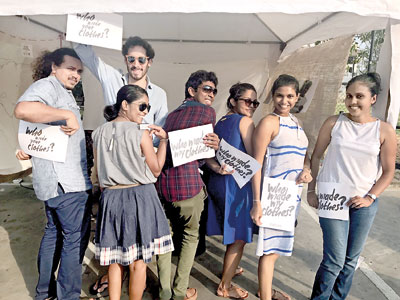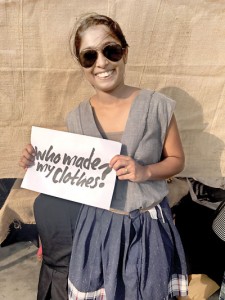Fashion Revolution Week : Remembering the lives behind the brands
 The collapse of Rana Plaza in Dhaka, which claimed more than a 1000 lives and injured another 2,500 in 2013, is still to this day considered as one of the world’s worst industrial accidents. Since then questions have been raised as to where people’s clothes were made as half the clothing brands under whose labels clothing was being put together in Dhaka failed to take responsibility at the time.
The collapse of Rana Plaza in Dhaka, which claimed more than a 1000 lives and injured another 2,500 in 2013, is still to this day considered as one of the world’s worst industrial accidents. Since then questions have been raised as to where people’s clothes were made as half the clothing brands under whose labels clothing was being put together in Dhaka failed to take responsibility at the time.
Since then Fashion Revolution Week is a global movement, which began asking this question. The programme coincides with the Rana Plaza collapse. It is based on the simple belief of using the power of fashion to change the world. Together the campaign calls for a fairer, safer, cleaner, more transparent fashion industry.
The week is used to encourage people to ask different brands ‘Who made my clothes?’ and demand transparency in the fashion industry. In keeping with this campaign we met Lonali Rodrigo at the Colombo Racecourse as she and her team undertook to create awareness on the issue in their own way.
“We’ve been getting people to wear their clothes inside out,” she tells us, adding that this was a part of the movement’s plan to raise awareness that week in keeping with the global campaign.
Even if people didn’t wear their clothes on the wrong side, Lonali and the team, asks them to check their shirt labels, which are on the back.
Some would walk up to them and when asked where they thought their t-shirt was from, they’d promptly say UK or U.S.A. But when asked to check, they’d discover it was not. “We wanted them to know what the brands were. We’re getting people to ‘hashtag’ the brands and ask questions from them. Answering them is the responsibility of the brands and the retailers,” Lonali says.
She goes on to add that this is a good platform for everybody to ask questions. “We’re getting people to really look at their labels and think where it’s really made and then ask questions and post it on social media.” Lonali tells us it’s actually interesting to see how people haven’t checked their labels and how they feel after they tell them about the cause. “We should responsibly wear something and we’ve gotten people to start thinking that way, which is the best kind of feedback.”

The movement does not believe that transparency alone could represent the bigger systemic change they would like to see in the fashion industry. However transparency helps shine a light on issues, so that they could better understand how to change.
This is the reason for their slogan ‘#whomademyclothes?’ during Fashion Revolution Week. They maintain that some brands would not answer the question. However they urge the public to keep asking, till they get to the factory where the garment was manufactured or even to the name of the person who made it.“Our power is in persistence. The more people who keep asking #whomademyclothes, the more brands will listen.”


